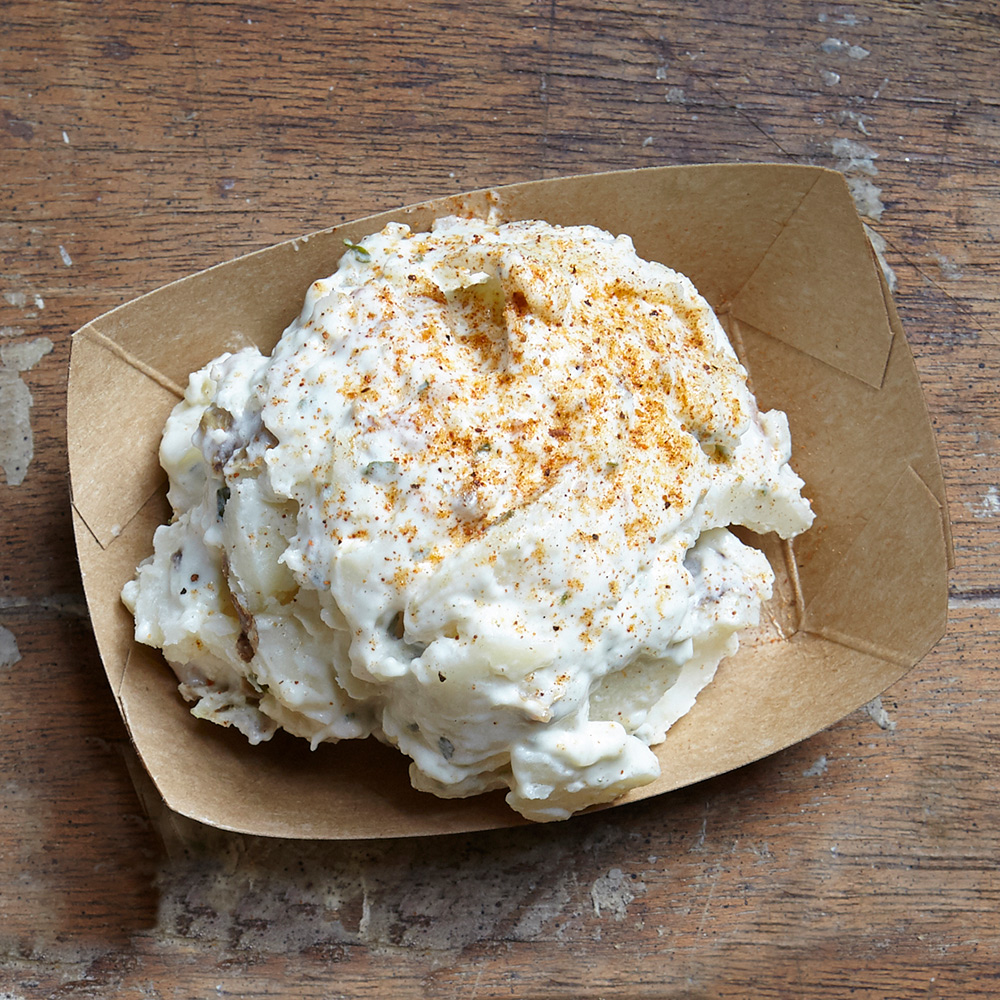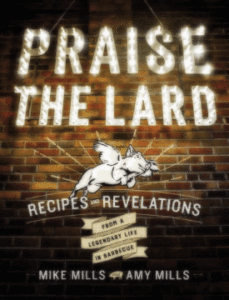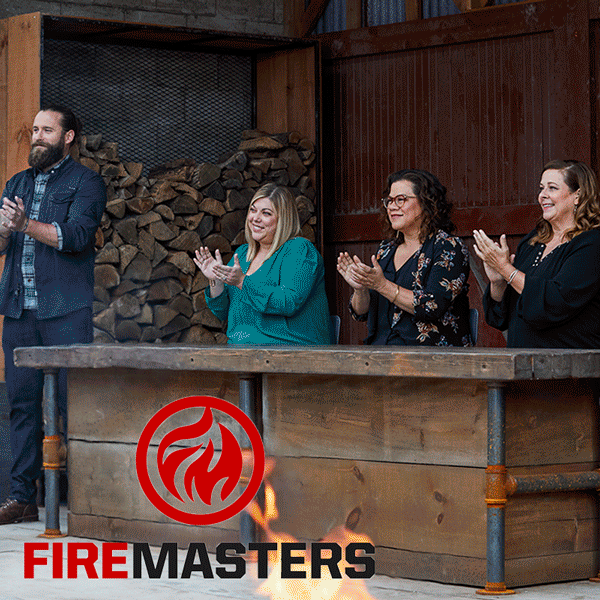
Every family ought to have a good potato salad recipe. 17th Street Barbecue Homestyle Potato Salad is ours. The potatoes must be perfectly cooked—not too hard or too mushy. Make this well in advance— the flavors need time to blend, and it should be served well chilled.
Homestyle Potato Salad
Recipe makes 4 to 6 servings
• 1 1/2 pounds small red-skinned potatoes, scrubbed
• Kosher salt
• 1/2 cup finely chopped onion
• 3 large eggs, hard cooked, peeled, and chopped
• 1 1/2 tablespoons celery seeds
• 3/4 cup mayonnaise (we use Hellmann’s)
• 1/2 cup sour cream
• 1/4 cup Buttermilk Ranch Dressing (recipe below)
• 1/2 teaspoon ground white pepper
• 1/2 teaspoon dry mustard (we use Colman’s)
• 1/2 teaspoon sugar
• 1 tablespoon pickle juice or dill pickle relish
• 17th Street Magic Dust®, for garnish
Put the potatoes in a large pot of salted water. Bring to a boil and cook for about 40 minutes, or just until tender. Test the potatoes by sliding the blade of a sharp knife into a potato. When it slides out clean, the potatoes are done. Don’t overcook them or you’ll end up with mashed potato salad.
Drain the potatoes in a large colander. When they are cool enough to handle, cut them into 1/2-inch dice, leaving the skins on. Transfer the still-warm potatoes to a large bowl and toss them with the onion, eggs, and celery seeds.
In a separate large bowl, make a dressing by mixing the mayonnaise, sour cream, ranch dressing, 1 teaspoon salt, the white pepper, mustard, sugar, and pickle juice.
Pour the dressing over the potatoes and mix gently with clean hands until the potatoes are well coated. Sprinkle the top lightly with Magic Dust®. Cover and refrigerate for 4 to 6 hours before serving.
Buttermilk Ranch Dressing
Recipe makes about 2 cups
The variety of fresh herbs used in our rendition of creamy ranch dressing gives it fresh, bright flavor. We use it in our 17th Street Barbecue Homestyle Potato Salad. Use any leftover dressing as a dip for vegetables.
• 3/4 cup full-fat buttermilk
• 1/2 cup sour cream
• 1/2 cup mayonnaise (we use Hellmann’s)
• 2 tablespoons finely chopped scallions
• 2 tablespoons finely chopped fresh flat-leaf parsley
• 2 tablespoons chopped fresh chives
• 1 small garlic clove, minced
• 1/4 teaspoon kosher salt
• 1/4 teaspoon coarsely ground black pepper
Whisk together all ingredients in a medium bowl. Decant into a mason jar, cover, and refrigerate; the dressing keeps for 5 days..
© Mike Mills and Amy Mills, published in Praise the Lard, Houghton Mifflin Harcourt







